While guidelines and reopenings continue to change and develop as summer begins, it’s safe to say that summer 2020 is going to look pretty different from summer 2019, and all the summers before.
Luckily, summer has a big edge on spring: It’s CSA season. Community Supported Agriculture is basically the original subscription box: A box of produce is delivered to the consumer straight from a farm on a weekly or biweekly basis, and the farmer gets to count on a certain amount of steady support throughout the season.
CSAs have a certain practicality about them: Food that grew nearby is delivered fresh from the farm. But getting that much fresh produce can also be intimidating. To make these bountiful boxes feel a little less overwhelming, we spoke with some chefs and farmers to get their best tips for making the most of a CSA, even if you can’t remember the difference between rhubarb and rutabaga.
How to find a CSA farm share
Farmers are dealing with a huge demand for CSAs this year, says Andrea Bemis, farmer and blogger behind Dishing Up The Dirt, for all the expected reasons. The biggest reason: People want guaranteed fresh produce as grocery stores remain poorly stocked. Plus, CSAs are a great way to support farmers who may lose income due to farmers market and restaurant closures. A number of databases exist to help locate local CSAs. If there aren’t any nearby, or they are already booked up, FarmBox Direct mails produce on a similar model. While it’s not subscription-based, the boxes change weekly to reflect what is currently in season.
Only Organic Small Box ($47.95; farmboxdirect.com)
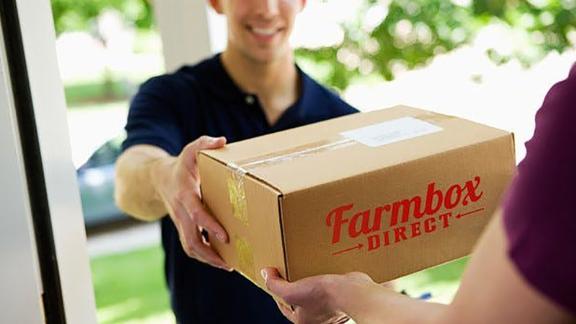
If a CSA is too much of a commitment, order mixed boxes of seasonal, organic produce as needed. Choose from a mix of fruit and veggies or just one or the other. All orders qualify for free shipping.
_________________________________________________________
Rastelli’s Meat Subscription Box (starting at $13, rastellis.com)
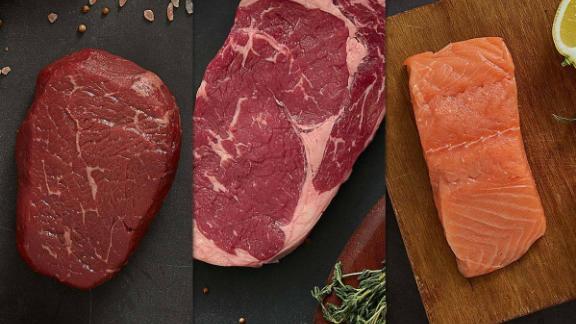
In addition to produce subscription boxes, meat subscription boxes are available to help avoid trips to the store. Rastelli’s ships beef, poultry, pork, seafood and even plant-based proteins. Orders over $200 get free shipping, and a recurring monthly delivery saves 5% percent.
How to prep the contents of a CSA farm share box
The most overwhelming part of a CSA might be getting the box.
“When I get my CSA box, I set aside an entire hour to wash, dry and prep the ingredients,” says Caroline Chambers, a recipe developer and author of “Just Married: A Cookbook for Newlyweds.” She starts with chopping up greens — so they can be grabbed for a quick meal — and cleaning and drying them in a salad spinner. Almost everything then gets stored in a reusable container with a paper towel, which helps absorb moisture.
Herbs can be stored in a cup with water to extend their life in the fridge for even a few weeks, says Bemis. Mike Geller, the owner of Mike’s Organic, a farm-to-home delivery service in Stamford, Connecticut, offers a great tip for root vegetables: Remove the tops immediately.
“The greens wick moisture away from the roots, so after only four or five days those turnips will be soft,” Geller explains. Removing the greens can extend their shelf life for up to a month. (And don’t toss those greens — more on that later.)
Oxo Good Grips Salad Spinner ($29.95, amazon.com)
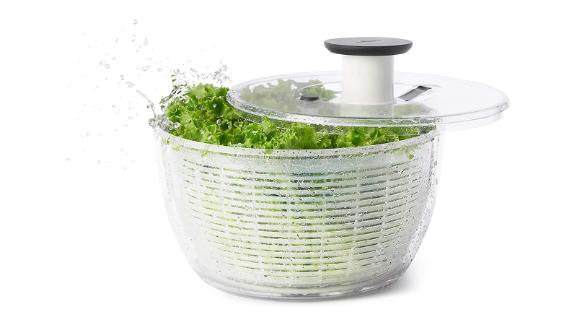
A salad spinner really speeds up cleaning greens and helps get all the water off quickly — essential for extending shelf life in the fridge. Chambers likes this spinner from Oxo, which can double as storage.
_________________________________________________________
Victorinox Fibrox Pro Chef’s Knife ($28.86; amazon.com)
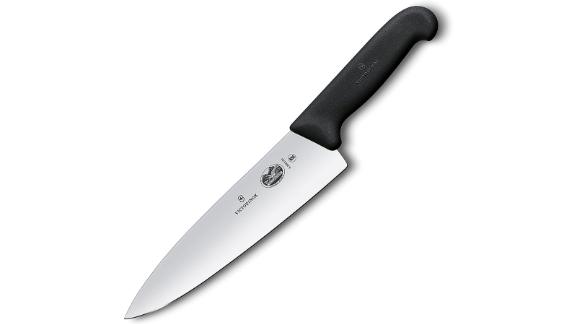
A good chef’s knife is indispensable. Victorinox’s lightweight Fibrox knife is a cult favorite that proves you don’t have to spend hundreds (or even over $30) to get a decent one.
_________________________________________________________
Qinline Reusable Storage Bags ($16.99, amazon.com)
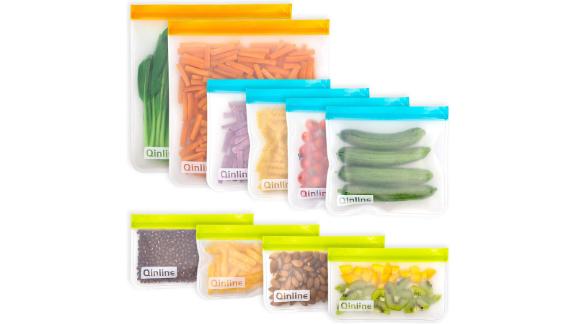
Storing prepped food in baggies or containers with a paper towel helps keep them accessible and easier to throw into a meal on the fly. To avoid single-use plastic, Chambers like this reusable bag set, which comes with two gallon bags great for greens.
_________________________________________________________
Prepworks by Progressive Produce ProKeeper ($19.84, amazon.com)
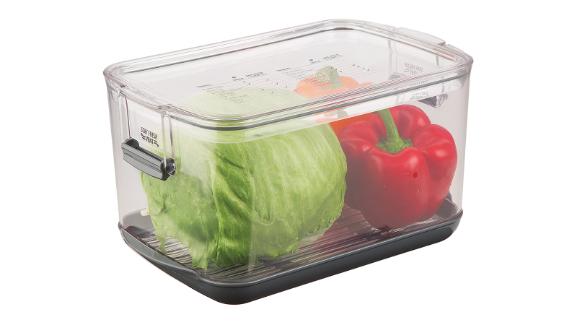
Large plastic containers with good air circulation are great for storing produce that isn’t long-lasting. (Root vegetables like carrots or turnips need far less careful care.) This well-rated container from Progressive includes a vent to keep moisture from settling on the produce.
How to use up everything in a CSA farm share box
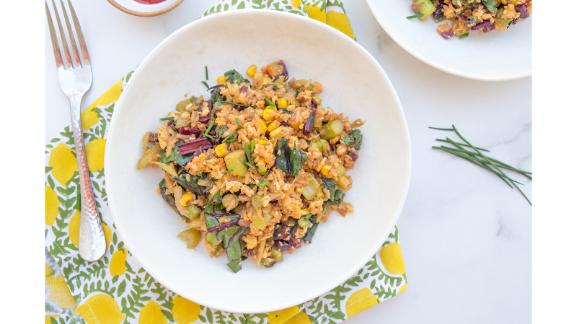
Next, it’s time to think about what to cook. Bemis recommends waiting to go to the grocery store or purchase meat and dry goods until after the CSA box arrives. Tracking down a recipe for everything in the box can be fun — or time-consuming (and may even result in buying more things that are a struggle to use up). The challenge is coming up with easy ways to use everything, so here are some tried-and-true suggestions.
Make a sauce
Bemis recommends this for nearly any greens (like those turnip greens that were chopped off earlier): Puree them in a blender with some garlic and olive oil to create a delicious sauce. It can top salads and meats, be a dip for veggies or go in pasta. Find ways to customize it with things like lemon, Parmesan and more.
Don’t forget breakfast
Often, breakfast is a bit of an afterthought when it comes to CSAs. But breakfast is a great way to start eating things up. Geller likes to cook down leafy greens in a frying pan with garlic and olive oil and a little water to get them tender. He eats them with eggs for an energizing breakfast. Just about any salad feels breakfasty with a boiled or fried egg next to it, but experiment with veggie scrambles, crustless quiches and more as well.
Hide it in plain sight
Many vegetables will taste great added to already cherished recipes. Bemis likes experimenting with adding vegetables to robust pasta sauces where they might go undetected. She also found a similar trick for eating up zucchini, a veggie that can get very abundant in CSA boxes. It’s mild enough that she realized it could be grated into oatmeal undetected. Get the added benefit of extra nutrients and one less thing to worry about using up.
Have a ‘big meal’
Most people are familiar with a “clean out the fridge” meal where everything gets eaten. For some people, that might be a big salad, complete with fresh herbs (don’t be afraid to go big, says Bemis), leftover roast veggies and even some quick-pickled produce from last week. Not a salad person? Try a stir fry, suggests Geller. Scrambles, pan roasts and even smoothies can be end-of-the-week “use up everything” dishes to perfect and experiment with as the summer progresses. Two recipes to keep at the ready: Check out Chambers’ Cheesy Kale and Lemon Pasta, which can be cooked up with any greens, and her Any-Veggie Fried Rice.
Freeze it!
“It seems counterintuitive to go to all the trouble of getting a CSA just to freeze it, but it’s not!” says Chambers. Instead, it’s preserving something at its peak freshness. She likes to chop up and store vegetables in gallon Ziploc bags. Greens can be cleaned, dried, and put right in the bag. For other veggies, she freezes them first in a single layer to keep them from sticking together, then transfers to the gallon bag after they’re frozen.
Geller has a tip for keeping the veggies looking bright even after they’re frozen. He blanches them by bringing a large pot of well-salted water to a boil. Then, he gives the veggies a “quick dunk” (about a minute) and immediately shocks them in a big pot of ice water. This stops them from cooking and preserves the bright color.
CSA farm share cooking essentials
Ninja Professional Countertop Blender ($89.99, originally $99.99; amazon.com)
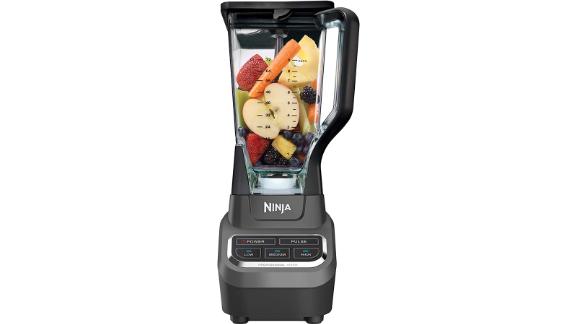
Smoothies are great ways to use up fruits and greens. Veggies that need to get used up also are perfect to sneak into pureed soups. When everything is blended together, a handful of extra chard isn’t going to stick out much. Ninja makes one of the best under-$100 high-powered blenders out there.
_________________________________________________________
GreenPan Levels Stackable Hard Anodized Ceramic Nonstick Frypan, 12” ($59.95; amazon.com)
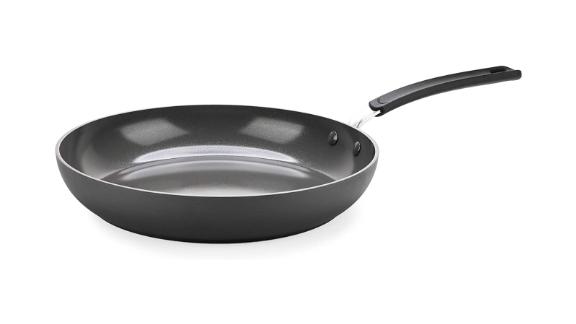
Underscored’s top pick for an eco-friendly pan, this will fry or scramble up a healthy breakfast in a flash and make cleanup a breeze.
_________________________________________________________
Oxo Good Grips Complete Grate & Slice Set ($31.99; amazon.com)
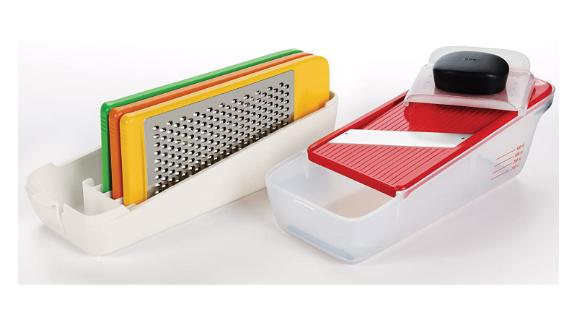
Oxo’s compact mandoline comes with a grater attachment as well as two attachments for slicing and julienning produce. In addition to grating up vegetables to add to sauces, switch out the attachments to create different textures and shapes in simple salads.
_________________________________________________________
Mepra Italian Outdoor Salad Bowl & Server ($64; food52.com)
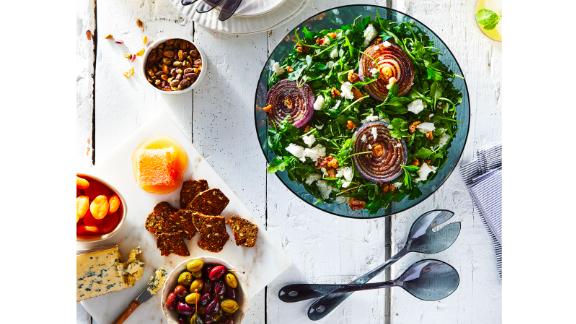
For a CSA member, salads become a regular part of life, so a hardy salad bowl with servers is essential. This lightweight salad bowl is designed for outdoor dining in summer, but is attractive enough to use indoors year-round as well.
_________________________________________________________
Ball Set of 12 Half Pint Quilted Mason Jars ($8.49; target.com)
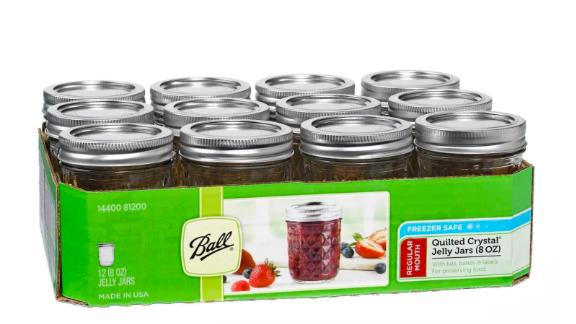
Even if canning and fermenting sound too complicated, use these handy jars for refrigerator or “quick” pickles. Pour 1 cup of water and ⅓ cup of vinegar into a small pot with a couple tablespoons of sugar and heat to dissolve the sugar. Then, add some spices, like dried peppercorns or herbs, and let the mixture cool before pouring it over any cut veggies one of these jars. They’ll keep in the fridge for months.
_________________________________________________________
Norpro Canning Essentials Boxed Set, 6 Piece Set ($16.99; amazon.com)
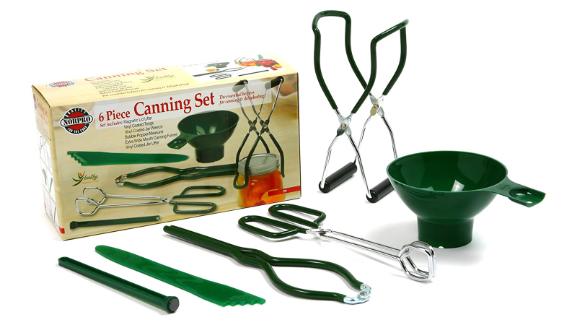
To shelf-stabilize produce without changing the flavor, canning is the way to go. This well-reviewed kit comes with all of the canning basics (not including jars) needed to start small-batch canning at home.
_________________________________________________________
Easy Fermenter Wide Mouth Lid Kit ($25.99, originally $39.99; amazon.com)
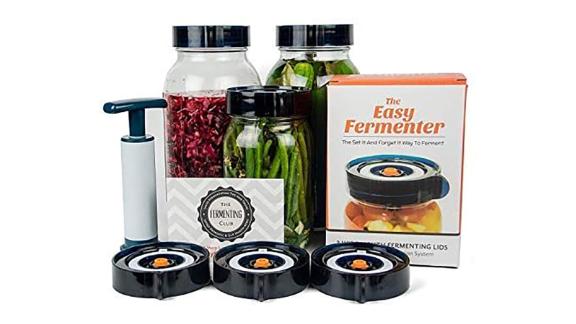
The benefits of eating fermented foods include improving everything from digestion to mental health. So, if the thought of fermenting produce isn’t too scary, this is the kit to try it out.
_________________________________________________________
Boise Salt Co. Pickling Spice ($6.95; amazon.com)
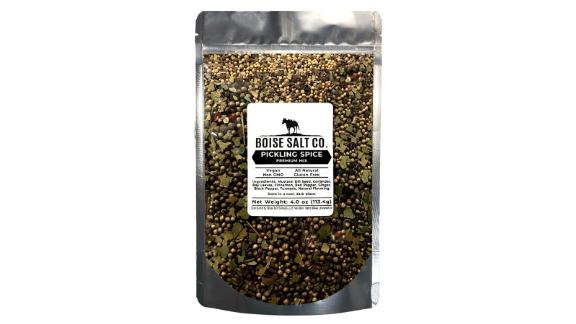
If coming up with a personal pickling spice mix feels overwhelming, just grab a bag of this premade batch from Boise Salt Co. Reviewers say that it’s “great for pickling anything.”
_________________________________________________________
Cuisinart 14-Cup Food Processor ($209.99, amazon.com)
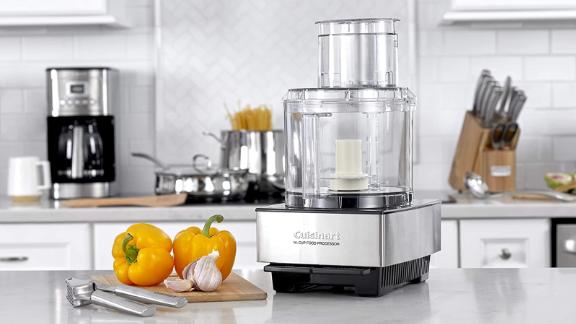
A food processor will turn just about any greens (including the greens of root vegetables like turnips and radishes) into a garlicky sauce that tastes great on everything. You can use a small or large processor for making a quick green sauce, but the 14-cup model is great for whirring up huge batches of greens fast.
_________________________________________________________
Ziploc Freezer Bags ($4.99; amazon.com)
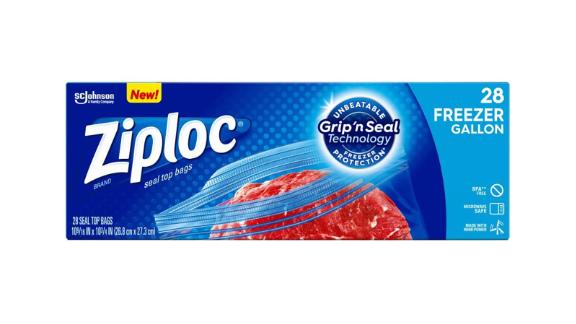
When freezing excess produce, make sure it lasts. Heavy-duty freezer bags protect fruit and veggies from freezer burn.
_________________________________________________________
Lodge 10-Inch Cast-Iron Skillet ($14.88, originally $26.68; amazon.com)
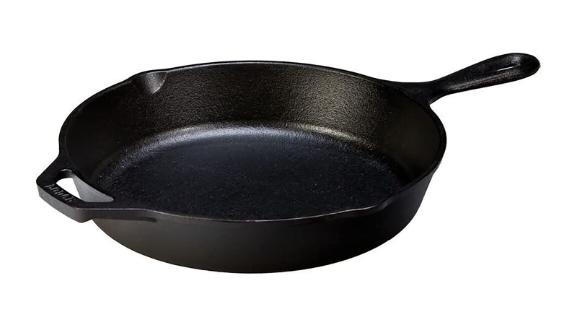
Cast-iron skillets are great for “use everything up” meals because they’re so versatile. Sear or saute veggies alone or with some meat and finish the dish off in the oven, or add eggs for a quick frittata. They’re great for stir-fries, too. Lodge is a cult favorite for a reason — Grandma or Grandpa probably had one, too, and they last forever.
_________________________________________________________
T-fal Stock Pot, 8 Quart ($23.99; amazon.com)
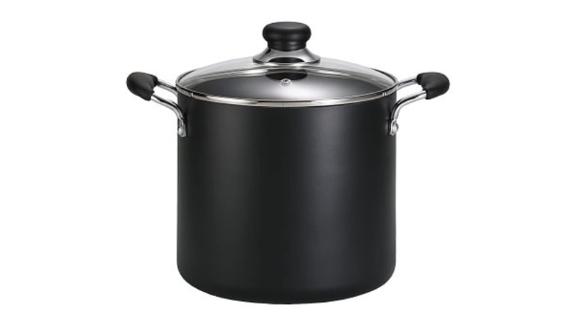
A stock pot is great for quickly blanching vegetables before freezing or storing them. Also, use it to double recipes for soups and sauces before freezing half. It’s a perfect size for canning, too.
_________________________________________________________
Nordic Ware Aluminum Baker’s Half Sheet, 2-Pack ($21.99, amazon.com)
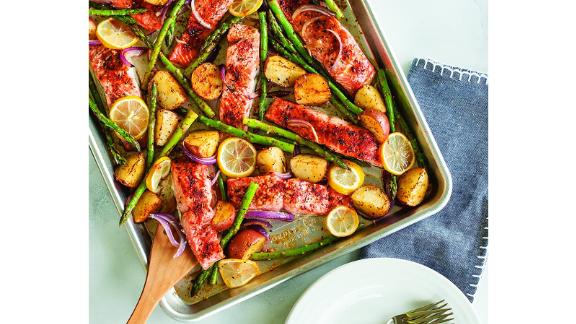
Sheet pans are ideal for roasting up one-pan dinners with vegetables, a favorite seasoning and maybe some protein. Bemis says foods that are in season at the same time tend to taste great together; try different combinations to see what tastes best. Cookie sheets are also useful for freezing vegetables in one layer so they won’t stick when put in a bag for longer-term storage.
_________________________________________________________
The best advice that the experts offered, however, doesn’t have that much to do with exact tips or tricks. “Don’t be afraid and have fun,” says Geller. Try new things, experiment, and expect a few messes and misadventures. You’ll end the summer a far better cook — and with a bunch of new recipes and no-recipe recipes in your repertoire. Even after the last peach is harvested, you’ll be cooking and eating with that knowledge for years to come.
Note: The prices above reflect the retailers’ listed prices at the time of publication.
"share" - Google News
June 24, 2020 at 11:03PM
https://ift.tt/2Z2AC1i
7 ways to make the most of a CSA farm share box - CNN
"share" - Google News
https://ift.tt/2VXQsKd
https://ift.tt/3d2Wjnc
Bagikan Berita Ini
















0 Response to "7 ways to make the most of a CSA farm share box - CNN"
Post a Comment